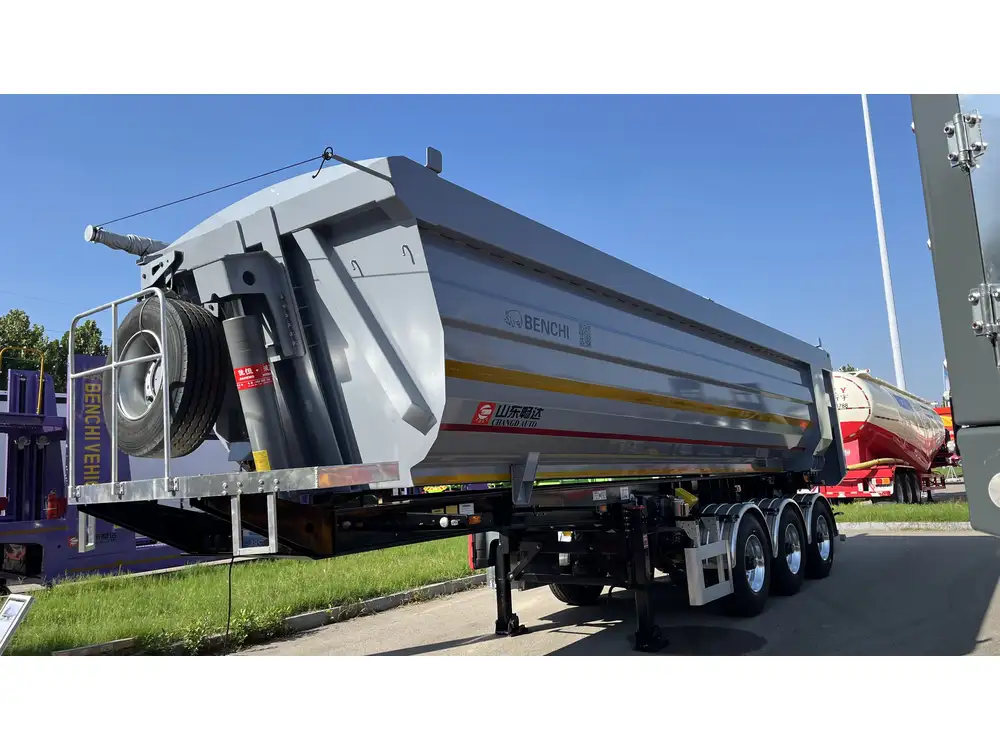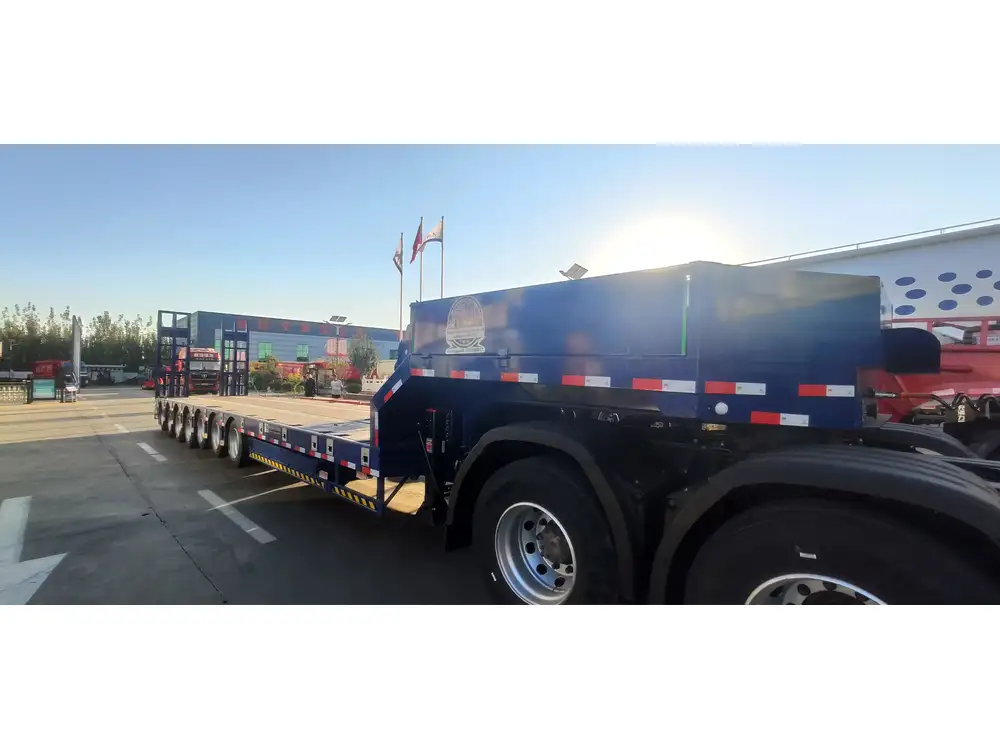Weight distribution is a critical factor in the safe operation and efficiency of semi-trailers. Improper weight distribution can lead to a myriad of issues, ranging from increased fuel consumption to severe safety hazards on the road. In this detailed guide, we will explore the principles of weight distribution, its implications, and best practices to ensure optimal loading.
Importance of Proper Weight Distribution
Maintaining an appropriate weight distribution in a semi-trailer is crucial for multiple reasons:
- Safety: Properly distributed weight minimizes the risk of accidents caused by trailer sway, tipping, or braking inefficiencies.
- Tire Longevity: Unequal weight distribution causes uneven tire wear, leading to premature tire failure and increased maintenance costs.
- Fuel Efficiency: Optimized weight placement directly affects aerodynamics and fuel consumption, leading to cost savings for operators.
- Legal Compliance: Adhering to federal and state weight regulations ensures that operators remain compliant with transportation laws, avoiding fines and legal issues.
Key Factors Affecting Weight Distribution

1. Load Type
Understanding the nature of the cargo being transported is essential for effective weight distribution. Loads can be classified as:
- Static Loads: These loads do not change position while in transit. Examples include building materials (lumber, concrete) and heavy machinery.
- Dynamic Loads: These loads shift during transport, such as liquids in tankers or animals in livestock trailers.
2. Axle Configuration
The number and configuration of axles on a trailer significantly influence weight distribution. Common configurations include:
| Axle Type | Description | Load Bearing Capacity |
|---|---|---|
| Single Axle | Easy to maneuver but limited load capacity | Typically up to 20,000 lbs |
| Tandem Axle | Two axles, providing better load distribution | Up to 34,000 lbs |
| Tri-Axle | Three axles, maximizing load capacity | Up to 52,000 lbs |
| Multi-Axle | Custom configurations for specialized needs | Varies widely |
3. Cargo Arrangement
The way cargo is arranged within the trailer also plays a significant role in weight distribution. Key layouts include:
- Evenly Distributed: Cargo evenly spread across the trailer’s length and width stabilizes the vehicle.
- Concentrated Loads: Placing heavier items closer to the trailer’s axles enhances stability but may require adjustments when loading lighter cargo.

Ideal Weight Distribution Guidelines
Achieving ideal weight distribution involves meticulous planning and execution during the loading process. Below are the recommended guidelines:
1. Front-to-Rear Weight Ratio
A general guideline is to keep the weight distribution around 60% on the front half of the trailer and 40% on the rear half. This ratio:
- Prevents overloading the rear axle, which can lead to instability.
- Enhances braking performance by keeping more weight on the front for better traction.
2. Side-to-Side Balance
Strive for a balanced distribution of weight from side to side. As a rule of thumb:
- Keep loads symmetrical. Exceeding 6 inches of deviation in weight distribution to one side can lead to dangerous situations during turns.

3. Axle Load Limitations
Every trailer has a maximum weight limit it can legally carry per axle. Depending on the configuration and design, these limits might be:
| Axle Configuration | Maximum Legal Load (lbs) |
|---|---|
| Single Axle | 20,000 |
| Tandem Axle | 34,000 |
| Tri-Axle | 52,000 |
Ensure load distribution does not exceed these limits to avoid potential fines and ensure safety.
Practical Steps for Optimizing Weight Distribution
To optimize weight distribution effectively, implement the following practices:
1. Pre-Trip Inspection
Perform a thorough inspection before loading, checking:
- Trailer and axle conditions (tires, brakes, etc.)
- Weight scales to ensure all loaded cargo falls within legal limits.

2. Using Weight Scales
Utilizing truck weight scales during loading can assist in measuring and verifying weight distribution accurately. Opt for:
- Portable scales: Offering flexibility on-site.
- Fixed weigh stations: Ensuring compliance throughout the journey.
3. Load Distribution Calculation
Calculate the load distribution mathematically. Using this formula can simplify the process:
[ \text{Load Distribution} = \frac{\text{Weight on Axle}}{\text{Total Weight}} \times 100 ]This will help ascertain whether the distribution aligns with set guidelines.
4. Load Securement Techniques
Proper load securement not only preserves the cargo but also ensures stability during transit. Use techniques such as:
- Straps and Tie-Downs: Effective in holding the load in place.
- Dunnage: Employ wood or other materials to create a buffer, preventing movement.

Common Challenges with Weight Distribution
Several challenges can arise during the loading and operation of semi-trailers. Recognizing these issues enables better management:
1. Shifting Cargo
Dynamic loads are prone to shifting, particularly on uneven surfaces or during abrupt stops. To combat this:
- Ensure that loads are evenly secured to reduce movement.
- Employ bulkheads or walls where applicable.
2. Overweight and Under-Weight Axles
Identifying and correcting any imbalances early on is vital. Use the following methods to address this:
- Redistribution of Weight: Move heavier items towards identified underweight axles.
- Reweighing: Regular checks during loading help maintain compliance.

Technology in Weight Distribution Management
When it comes to refining the weight distribution process, technology provides innovative solutions:
1. Onboard Weighing Systems
Invest in onboard weighing systems for real-time data on weight distribution, allowing for adjustments on-the-fly.
2. Telematics and Fleet Management Software
Use telematics to monitor vehicle performance and weight distribution patterns, providing insights that can drive operational efficiency.

Conclusion
Understanding and applying the principles of weight distribution in semi-trailers is fundamental for safe and efficient transportation. By prioritizing safety, optimizing load configurations, and utilizing technology, operators can not only adhere to regulations but also enhance operational performance. Through meticulous planning and execution, the challenges associated with weight distribution can be expertly managed, ensuring that every journey is a successful one.
Additional Resources
For more in-depth analysis on semi-trailer operations and weight distribution techniques, consider exploring these resources:
- National Association of Trucking: Resources on regulations and compliance.
- Truck Trailer Manufacturers Association (TTMA): Educational materials on trailer design and performance.
- Federal Motor Carrier Safety Administration (FMCSA): Guidelines on weight limits and safety standards.
By embracing these practices and resources, operators can adeptly navigate the complexities of weight distribution in semi-trailers, ensuring optimal safety and efficiency for every load transported.



